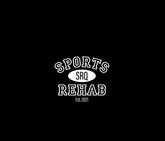Banish Golfer's Elbow: Evidence-Based Strategies for Optimal Recovery
To all my fellow golfers and sports enthusiasts of Sarasota, let’s tackle a common ailment that plagues many golfers: the notorious golfer's elbow. Whether you're a seasoned pro or just starting out, this nagging condition can put a serious damper on your game. Here’s a sports rehabilitation research guide to bring you the most effective, evidence-based strategies to kick golfer's elbow to the curb. Let's dive right in!
-
Understand the Anatomy: To overcome any obstacle, it's crucial to understand its root cause. Golfer's elbow, or medial epicondylitis, stems from repetitive stress on the tendons in your forearm, specifically those connected to the medial epicondyle bone. These muscles are involved in flexing the wrist, curling your fingers, rotating the wrist and sometimes flexing the elbow. Understanding this anatomy will help you grasp why certain treatments work better than others.
-
Modify Activities: First and foremost, give your elbow some well-deserved rest, but that doesn't mean you have to abandon your beloved golf game altogether. Simply modify your activities by reducing the intensity and frequency of your swings. A temporary break from repetitive motions will provide the tendons with an opportunity to heal.
-
Physical Therapy: Physical therapy is a game-changer when it comes to golfer's elbow. Seek out a skilled and experienced physical therapist, like those at SRQSportsRehab.com, who can design a tailored exercise program to strengthen your forearm muscles and improve flexibility. These exercises might include eccentric wrist curls, pronation/supination exercises, and wrist extensor/flexor stretches.
-
Utilize the Power of Cold and Heat: Cold and heat therapies can be valuable allies in your recovery journey. I like using a heating pad to alleviate pain when the soreness, pain and irratation levels are really high. Using a warm compress or taking a warm shower can help increase blood flow to the area and promote healing.
-
Ergonomic Adjustments: Take a moment to assess your equipment and technique. Ill-fitted golf clubs or improper gripping can exacerbate golfer's elbow. Consult with a golf professional to ensure your equipment is properly fitted to your body, reducing unnecessary strain on your elbow. Additionally, practicing proper swing mechanics can help distribute forces more evenly, reducing the risk of injury.
-
Explore Other Treatment Modalities: In some cases, additional treatment modalities may be necessary. These can include:
-
Extracorporeal Shockwave Therapy (ESWT): ESWT utilizes high-energy sound waves to stimulate healing and reduce pain. It has shown promising results in treating golfer's elbow.
-
Platelet-Rich Plasma (PRP) Injections: PRP injections involve injecting concentrated platelets from your own blood into the affected area, promoting tissue repair.
-
Nonsteroidal Anti-Inflammatory Drugs (NSAIDs): Under the guidance of a healthcare professional, NSAIDs can help manage pain and reduce inflammation.
Remember, treating golfer's elbow requires patience and consistency. By combining these evidence-based strategies with proper self-care and a little bit of time, you'll be back on the green swinging like a pro in no time. Don't let golfer's elbow dampen your spirits or hinder your game. Embrace these tips, consult with experts at SRQSportsRehab.com, and get ready to reclaim your swing and reignite your passion for golf!
References:
-
Kaux JF, Forthomme B, Namurois MH, et al. Eccentric training for tendon healing after lesion: a rat model. Am J Sports Med. 2011;39(4):753-760.
-
Jafarian FS, Demneh ES, Tyson SF. The effects of extracorporeal shockwave therapy on grip strength and pain in patients with golfer’s elbow. Clin Rehabil. 2012;26(6):524-534.
-
McShane JM, Shah VN, Nazarian LN. Sonographically guided percutaneous needle tenotomy for the treatment of chronic tendinosis. J Ultrasound Med. 2006;25(9):1141-1149.

